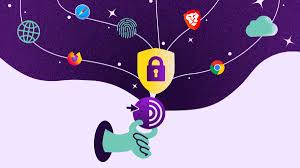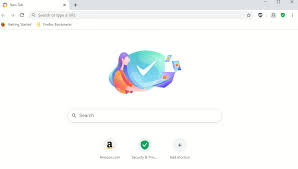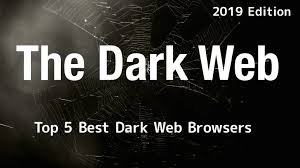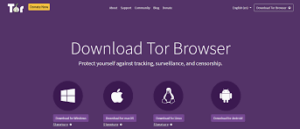The dark web refers to a concealed segment of the internet that remains unindexed by conventional search engines and requires specialised browsers, such as Tor, for access. This hidden realm encompasses a range of activities, both lawful and unlawful, providing users with anonymity while simultaneously presenting dangers like scams and illegal content. To understand the broader context of the internet, it’s essential to differentiate between the dark web, deep web, and surface web.

The internet is vast, filled with millions of websites, databases, and servers operating around the clock. However, what we commonly refer to as the visible internet—also known as the surface web or open web—comprises only a tiny fraction of this digital landscape; these sites are easily discoverable through search engines like Google or Yahoo. There are various terms associated with the non-visible aspects of the internet that are important to grasp if you intend to venture beyond mainstream browsing.
The surface web, often referred to as the open web, represents the portion of the internet that is easily accessible and visible to users. If we think of the internet as an iceberg, this segment would be the part that rises above the waterline. Statistically speaking, this collection of websites constitutes less than 5% of the entire online landscape.
It includes all those public-facing sites that individuals access using standard web browsers such as Google Chrome, Internet Explorer, and Maxthon. These websites are typically identified by domain extensions like .com and .org, making them straightforward to find through well-known search engines. The ability to locate these surface websites stems from search engines indexing content through visible links—a process known as crawling—wherein search engines navigate the web much like a spider traverses its web.

The deep web lies beneath the visible internet, comprising around 90% of all websites. Think of it as the submerged part of an iceberg, significantly more extensive than what we can see above water. The sheer scale of this hidden realm makes it impossible to pinpoint the exact number of active pages or sites at any given moment. To further illustrate, major search engines function like fishing boats, capable only of catching those websites that are nearer to the surface. Everything else—ranging from academic research articles to private databases and even some more questionable content—remains beyond their reach.
Within this vast expanse also exists what is commonly referred to as the dark web. It’s important to note that while many media outlets often conflate the deep web with the dark web, a significant portion of the deep web is entirely legal and safe for use. Notable segments within the deep web include:
– Databases: These are collections of files, both public and privately secured, that aren’t linked to other parts of the internet and can only be searched within their confines.

Intranets are private networks utilised by businesses, government bodies, and educational institutions for internal communication and operational management.
If you’re curious about how to navigate the deep web, you might be surprised to learn that you likely engage with it every day. The term deep web encompasses all web pages that search engines cannot index. Passwords or other security measures may protect some sites, while others simply request that search engines refrain from indexing them. Without visible links leading to these pages, they remain obscured for various reasons.

Overall, much of what exists in this expansive deep web tends to be clean and secure. It includes everything from blog drafts, and upcoming website redesigns to secure pages used during online banking—all integral parts of this hidden layer without posing risks to your computer or personal safety at large. Most content remains concealed from public view primarily for user protection and privacy considerations.
Financial accounts, such as banking and retirement funds, along with personal email and social media profiles, are just the tip of the iceberg when it comes to sensitive information. Private company databases and HIPAA-protected materials like medical records, as well as legal documents, represent a significant portion of what lies beneath the surface. However, delving deeper into the less explored areas of the internet can introduce risks. For some individuals, specific segments of the deep web provide a means to circumvent local restrictions and access streaming services for TV shows or movies that aren’t available in their region. Others may venture even further to download illegal music or films in theatres.
At the most perilous end of this spectrum is what is known as the dark web—a realm where dangerous activities and content abound. This part of the internet is accessible only through specialised browsers like Tor and consists of sites that remain unindexed by traditional search engines. In terms of size, it’s significantly smaller than what we refer to as the surface web but remains an integral part of the deep web. If we visualise this concept using an ocean metaphor, we can think of the dark web as being akin to the submerged tip of an iceberg.

Despite its obscurity, few people actually engage with or even encounter this hidden segment. The deep web encompasses all content that lies beneath what is readily visible online but can still be accessed with appropriate software—the dark web included. When examining how this concealed layer operates, several vital characteristics emerge that contribute to its anonymity: mainstream search engines like Google do not index the dark web, and these tools cannot locate or present results for pages hosted on the dark web.
Furthermore, users navigate through virtual traffic tunnels created by randomised networks explicitly designed for privacy—making accidental encounters with illicit sites more common than one might expect while browsing standard internet platforms. This inadvertent exploration could lead users to piracy websites or forums promoting radical ideologies or even disturbing violent material without them realising it until they’re already entrenched in those environments. As such, understanding safety on both levels—the deep web and its darker counterpart—is crucial for anyone venturing online today.

The dark web has frequently garnered a reputation associated with criminal activities and illegal content, mainly through trading platforms where individuals can acquire prohibited goods or services. Nevertheless, it’s essential to recognise that legitimate entities have also utilised this environment. When discussing safety on the dark web, it’s essential to differentiate between the threats posed by the deep web and those specific to the dark web itself. While illegal cyber activities are not easily stumbled upon, they can become significantly more severe and perilous if actively sought out. Before delving into the various dangers of the dark web, it’s crucial to understand how and why individuals access these sites.
Accessing the dark web has evolved. Hackers, law enforcement agents, and cybercriminals previously dominated it. However, advancements in technology—particularly encryption methods and anonymising software like Tor—have opened up this hidden realm to anyone curious enough to explore it.
The Tor browser (short for The Onion Router) enables users to visit websites that operate under the .onion domain. Researchers at the United States Naval Research Laboratory initially created this service in the late 1990s to enhance privacy online.

Recognising that the internet inherently lacks privacy, an early iteration of Tor was explicitly developed to secure communications among spies. Over time, this foundational technology was adapted and eventually made accessible to the public as the browser we are familiar with today. It’s available for anyone to download at no cost. You can think of Tor as just another web browser akin to Google Chrome or Firefox.
However, instead of following a straightforward path from your device to the hidden corners of the web, Tor employs a series of encrypted servers called nodes that create a random route for your data. This method enables users to explore the deep web without worrying about surveillance or their browsing history being revealed. Additionally, websites on the deep web utilise Tor or similar tools like I2P (the Invisible Internet Project) to maintain their anonymity, making it impossible to trace who operates them or where they are hosted.
Accessing the dark web is not illegal. In fact, there are legitimate uses for it that underscore its value. Users can derive three main advantages from engaging with the dark web: anonymity, access to nearly untraceable services and websites, and the possibility of carrying out illicit activities for both users and service providers. This aspect of the dark web has drawn individuals who might be at risk if their identities were exposed online, including victims of abuse, whistleblowers, and political dissidents. However, these same features can also be exploited by those wishing to operate outside legal boundaries in more overtly unlawful ways.

The legality of the dark web largely hinges on how one chooses to interact with it. Some users may find themselves crossing legal lines due to their pursuit of freedom or safety, while others may engage in activities that endanger others. To better understand this dynamic, we should examine both the use of dark web browsers like Tor and the nature of the websites accessed through them.
Regarding Tor specifically, using this software is not inherently illegal. In reality, such anonymising browsers are not limited solely to accessing the dark web; many people utilise Tor for private browsing across both public internet spaces and deeper layers of the web. The privacy that Tor provides is increasingly vital in our digital landscape, where unauthorised surveillance by corporations and governmental entities is prevalent. Many individuals prefer to keep their online activities hidden from government agencies or Internet Service Providers (ISPs). At the same time, some have no option but to rely on tools like Tor or virtual private networks (VPNs) simply to access basic information in countries with stringent internet regulations.
Even though Tor is a legal browser, it can still be a platform for engaging in unlawful activities that may lead to your incrimination. For instance, individuals might use Tor to illegally download copyrighted materials from the deep web, distribute illicit pornography, or participate in cyber terrorism. Simply opting for a legal browser does not exempt you from the consequences of illegal actions.

The dark web’s legality is somewhat ambiguous. Typically, accessing this part of the internet suggests an intention to partake in activities that one would prefer to keep hidden from public scrutiny. This can be particularly true for government critics and advocates who fear repercussions if their identities are revealed. Similarly, those who have been victimised may wish to keep their discussions about traumatic experiences private from their attackers.
If an activity is classified as illegal by the governing authorities relevant to you, it remains unlawful regardless of where it takes place. However, anonymity on the dark web has its downsides; it attracts criminals and malicious hackers who thrive in secrecy. Activities like cyberattacks and trafficking are knowingly incriminating undertakings that participants choose to conduct away from prying eyes.
While merely exploring these online spaces isn’t inherently against the law, it can pose significant risks if you’re not vigilant or lack the advanced computer skills needed to navigate its dangers safely. The dark web houses various unsavoury activities that could expose unsuspecting users to unnecessary hazards. So, when considering what drives people to utilise the dark web for illegal purposes, it’s essential to recognise both its allure and inherent dangers.
Exploring the dark web can be enticing for those seeking privacy, but it raises an important question: Is it really safe to venture into this shadowy realm? The reality is that the dark web can indeed pose significant dangers. As you navigate through its depths, you may encounter various threats that lurk around every corner.

One of the most prevalent risks is malicious software, commonly known as malware. This harmful software thrives in the dark web environment and is frequently made available on specific platforms to equip cybercriminals with tools for launching attacks. Unfortunately, just like on the surface web, unsuspecting users are at risk of infection from malware that permeates these hidden corners of the internet. Unlike typical website providers who often adhere to social contracts designed to safeguard their users, the dark web lacks such protections. Consequently, visitors may find themselves vulnerable to several types of malware, including keyloggers, botnet malware, ransomware, and phishing schemes.
If you decide to delve into any sites within this hidden network, you expose yourself to potential targeting by hackers and other malicious actors. While many endpoint security programs can help detect misgovernment Surveillance
As law enforcement agencies worldwide increasingly target Tor-based websites, the risk of becoming a government target simply for visiting these dark corners of the internet is evident. Notorious illegal drug markets, such as the Silk Road, have previously been seized for police monitoring purposes. Authorities employ specialised software to infiltrate these sites and scrutinise user activities, which has led to the identification of both customers and onlookers. Even if you refrain from making any purchases, your online presence could still be monitored, potentially implicating you in unrelated activities down the line. Such infiltrations not only expose you to surveillance regarding your browsing habits but may also put you at risk for other pursuits deemed illegal. In some nations, exploring alternative political ideologies can result in imprisonment due to stringent government regulations. For instance, China implements what is known as the Great Firewall to restrict access to numerous popular websites for this very reason. Simply visiting specific types of content could land you on a watchlist or even lead to immediate legal repercussions.

Scams
In addition to surveillance concerns, there are also fraudulent schemes lurking in the shadows of the dark web. Some purported services—like hiring professional hitmen—might merely be scams aimed at exploiting gullible individuals seeking such illicit offerings. Reports indicate that various illegal services proliferate within this hidden segment of the internet, ranging from paid assassinations to human trafficking for sex and weapons. While some threats are well-established and recognised within this realm, others may exploit the dark web’s notorious reputation to swindle users out of significant amounts of money. Moreover, specific individuals operating in this space might engage in phishing scams designed to steal personal information or identities for extortion purposes.

Monitoring for identity theft is essential if you aim to safeguard your personal information from misuse. Various forms of private data are frequently traded online for profit, including passwords, home addresses, bank account details, and social security numbers, all of which are prevalent on the dark web. You might already recognise that cybercriminals can exploit this information to damage your credit score, commit financial fraud, and compromise your other online accounts. Additionally, leaks of sensitive data can tarnish your reputation through social engineering scams. To counteract these threats, employing antimalware and antivirus solutions is equally vital in preventing exploitation by malicious individuals. The dark web is rife with data breaches originating from users whose systems have been infected with malware. Cyber attackers utilise tools such as keyloggers to capture your information and can infiltrate your system anywhere on the internet.
If you find yourself needing to access the dark web for legitimate reasons, prioritising safety is crucial. Here are seven strategies for secure navigation in this risky environment:
First and foremost, trust your instincts—being cautious will help you avoid scams. It’s important to remember that not everyone online has good intentions; therefore, staying vigilant about whom you interact with and the websites you visit is necessary. If anything feels off or uncomfortable during your exploration, don’t hesitate to extricate yourself from that situation.
Moreover, it’s wise to separate your online identity from your real life altogether. Avoid using any personal identifiers—such as usernames linked to your real name or email addresses—as well as passwords or credit card information that could trace back to you in any way. If required, create entirely new disposable accounts and identifiers just for this purpose.

Before making any transactions on the dark web, acquire prepaid debit cards that cannot be linked to you personally. Anonymity should be a priority when dealing in such spaces where identification could lead to real-world consequences.
Implementing these precautions while accessing the dark web responsibly and safely and navigating its complexities can help mitigate potential risks associated with identity theft and other cyber threats.
Protecting Yourself from Dark Web Exploitation
Regardless of whether you’re a business owner, parent, or just an average internet user, it’s crucial to take proactive measures to safeguard your information and private life against potential exploitation by elements associated with the dark web. Ate malware infection threats online can spill over into your offline life if your computer or network connection is compromised. Although anonymity provided by Tor and the structure of the dark web offers a certain level of protection, it’s crucial to remember that it’s not foolproof. Any activity conducted online has the potential to leave traces that could lead back to your identity if someone is determined enough to investigate further.
To safeguard against identity and financial theft, it’s crucial to monitor your online presence actively. Numerous security services today provide identity protection tools designed to enhance your safety, so be sure to utilise these resources if they’re available to you. It’s also wise to steer clear of downloading files from the dark web, as the risk of malware infection is significantly heightened in that unregulated environment. If you do choose to download anything, using an antivirus program with real-time file scanning can help ensure the safety of incoming files.

Additionally, it’s advisable to disable ActiveX and Java in your network settings. These platforms are frequently targeted and exploited by cybercriminals, so avoiding them can reduce your exposure to potential threats while navigating online. For everyday activities, consider using a secondary local user account that does not have administrative privileges. The primary account on most computers typically possesses full administrative rights by default, which many forms of malware exploit for their operations. By limiting the permissions of the account you use regularly, you can effectively slow down or even prevent exploitation.
Moreover, it’s essential to restrict access to devices equipped with Tor. This precaution helps protect vulnerable family members—especially children—from inadvertently encountering inappropriate content or dangerous situations online. While exploring the Deep Web may pique your interest, it’s best not to allow kids near it at all.
Dig into related articles that provide valuable insights into cybersecurity topics such as keyloggers and botnets, ways hackers compromise online privacy, and how spyware detection works to protect privacy.
Maxthon
Maxthon has established a reputation as a practical browser for navigating the deep web, primarily due to its strong security measures and support for various encryption protocols. This browser offers users a secure and private online experience, making it well-suited for exploring the more obscure areas of the internet. With features like an ad blocker and anti-tracking tools, Maxthon prioritises user privacy while they traverse the deep web.
These functionalities work to safeguard individuals from invasive advertisements and prevent third-party entities from surveilling or profiling their online behaviour. By blocking ads and tracking scripts, Maxthon creates an environment where users can browse without interruptions or concerns about targeted advertising based on their activities. The ad blocker effectively eliminates pop-ups, banner ads, and other advertising formats that could clutter web pages, resulting in a cleaner interface that allows users to focus on content.

Simultaneously, the anti-tracking feature is proficient at thwarting various methods employed by websites and advertisers to gather data on user interactions. Beyond enhancing privacy, these tools also lead to quicker browsing speeds by minimising the volume of external content that needs loading. This improvement contributes to a smoother navigation experience through the often intricate and less regulated landscape of the deep web.
Maxthon’s dedication to protecting user privacy is evident through its ad-blocking capabilities and anti-tracking measures, which act as barriers against disruptive online surveillance tactics. Additionally, it includes a built-in VPN that enables users to conceal their IP addresses for greater anonymity when accessing hidden sites. The browser also accommodates Tor usage, further bolstering its effectiveness in deep web exploration.
Moreover, Maxthon is designed for rapid loading times, ensuring efficient access to deep web resources and content. In essence, this combination of features makes Maxthon an exceptional choice for those seeking both security and efficiency while delving into the depths of the internet.
